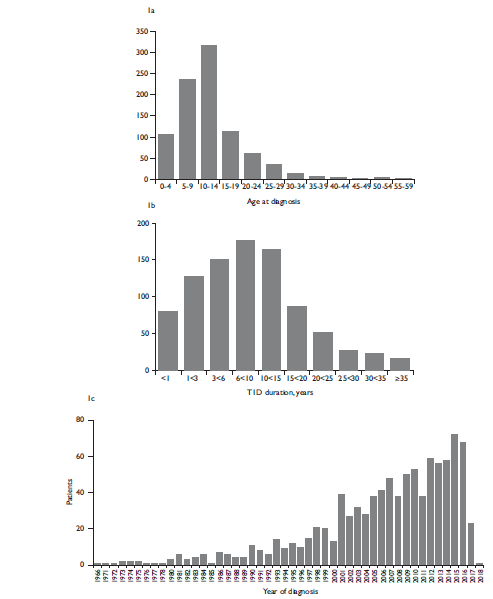Dear editor: Type 1 diabetes (T1D) is one of the most common chronic diseases in childhood, it is not preven-table, and if not treated with insulin, is mortal. Suboptimal insulin treatment increases the risk of complications.1
According to Mexican Institute for Social Security (Instituto Mexicano del Seguro Social, IMSS), the T1D inci- dence in <19 years-old increased from 3.4 to 6.2/100 000 between 2000 and 2010.2 The 2017 morbidity yearbook reported 5.45 new cases/100 000. The prevalence of T1D in Mexico is unk- nown and there is scare information regarding diagnosis, treatment and follow-up. International registries3 have improved disease understanding, treatment practices and public health policies. These have documented increased incidence and prevalence of T1D in the last 20 years; none of them include Latin-American populations. The few studies available in Mexico, address T1D in childhood and adolescence,4 but no long-term outcomes.3
To address this unmet need, a group of T1D patients and physicians, developed an online T1D registry in Mexico for longitudinal follow-up: National Registry of Patients with Type 1 Diabetes (Registro Nacional de Pacientes con Diabetes Tipo 1, RENACED-DT1).5 This represents the first longitudinal registry in Mexico. It is endorsed by the Mexican Society of Nutrition and Endocrinology (Sociedad Mexicana de Nutrición y Endocrinología). We present an exploratory analysis of 965 patients registered from 7/2014- 1/2018: females 61%, current median age 21 years, median diagnosis age 11 years (figure 1a), median disease duration at enrollment 8.2 years (figure 1b); 58% in the private and 42% in the public sectors; 54% required hospitalization at diagnosis, 41% presented with diabetic ketoacidosis and 9% were treated at an intensive care unit; 81% were diagnosed after the year 2000 (figure 1c).

Figure 1 Selected characteristics of cases registered in the RENACED type 1 diabetes registry in Mexico. 1a. Age at diagnosis. 1b. Type 1 diabetes duration in years. 1c. Year of type 1 diabetes diagnosis
Most frequent treatment is basal- bolus with insulin analogues (61%); 21% use insulin-pumps and 9% use continuous glucose monitoring, the latter mostly in the private sector. Mean glycated hemoglobin A1c at last follow-up was 8.7±2.1% (72±23 mmol/mol). Forty four percent were overweight or obese. With longer dia- betes duration, higher frequency of chronic complications was observed. A limitation to date is the insufficient public sector representation.
Mexican government funds should be available to optimally treat T1D patients permanently (par-ticularly those recently diagnosed), to decrease the incidence of compli- cations, improve quality of life and productivity.
RENACED-DT1 registry will help increase understanding the T1D reality in Mexico, to boost advocacy efforts to change public health policy and improve universal access to state- of-the-art therapy.











 nueva página del texto (beta)
nueva página del texto (beta)


